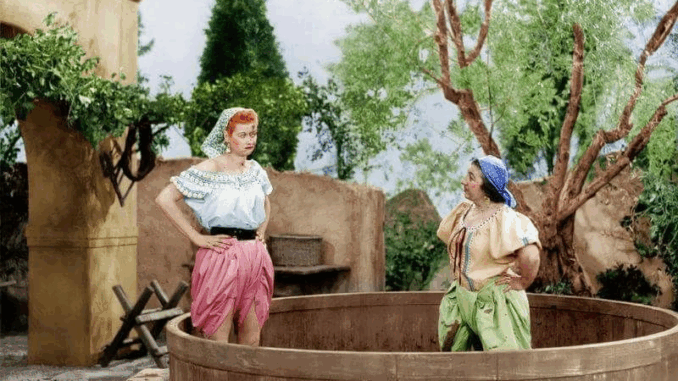
When I Love Lucy wrapped its legendary six-season run in 1957, it left an enormous void in American television. Lucille Ball and Desi Arnaz had created a cultural phenomenon, one that redefined sitcoms, set ratings records, and gave audiences some of the most memorable moments in TV history. So when the duo returned later that year with The Lucy-Desi Comedy Hour (originally titled The Lucille Ball–Desi Arnaz Show), expectations were sky-high.
And while the new series certainly had its laughs — and even delivered some iconic moments — it never quite reached the magic of its predecessor.
A New Format, a Different Energy
One of the biggest differences was the structure. I Love Lucy was a fast-paced, 30-minute sitcom, each episode a tightly written, perfectly timed burst of comedy. The Lucy-Desi Comedy Hour, by contrast, ran for a full hour and aired as occasional specials rather than weekly episodes. That change in pacing gave the show a looser, sometimes slower rhythm.
In I Love Lucy, gags built quickly, misunderstandings snowballed, and punchlines landed with precision. The hour-long format often diluted that momentum, making some episodes feel stretched.
Star Power Over Familiar Chemistry
Another key difference was the shift in focus. The Lucy-Desi Comedy Hour leaned heavily on celebrity guest stars — from Bob Hope to Milton Berle — often making the plot revolve around them. While the star-studded lineup was impressive, it sometimes pulled attention away from the core cast dynamic that made I Love Lucy so beloved.
The magic of Lucy, Ricky, Ethel, and Fred bouncing off each other wasn’t always front and center. Instead, episodes often became showcases for the guest star, with Lucy’s antics built around their persona.
Humor That Felt Bigger, But Not Always Funnier
In I Love Lucy, the comedy often came from small, relatable situations — baking bread, working in a chocolate factory, or trying to learn a new song. The jokes were rooted in character and everyday life.
In The Lucy-Desi Comedy Hour, the scale was bigger: exotic vacations, Hollywood adventures, elaborate guest setups. While these plots could be funny, they sometimes felt more like variety-show sketches than the intimate, character-driven humor fans loved.
Still Worth Watching
That’s not to say The Lucy-Desi Comedy Hour wasn’t enjoyable. There are episodes that hold up beautifully, showcasing Ball’s unmatched physical comedy and Arnaz’s charisma. And seeing the Ricardo and Mertz couples in color for the first time added a fresh visual appeal.
For many fans, the series is a bittersweet bridge between I Love Lucy and Lucille Ball’s later shows, The Lucy Show and Here’s Lucy. It kept familiar characters alive for a little longer, even if the magic wasn’t quite the same.
The Legacy Lives On
Ultimately, The Lucy-Desi Comedy Hour serves as a reminder of how lightning-in-a-bottle I Love Lucy truly was. It wasn’t just about Lucy’s schemes or Ricky’s exasperation — it was about the chemistry, timing, and relatability that made viewers feel like they were part of the Ricardo household.
The follow-up series may not have matched the original’s brilliance, but it remains a fascinating and often entertaining chapter in the story of two of television’s greatest icons.
